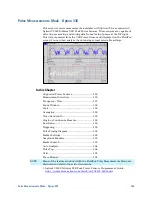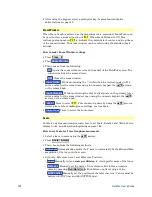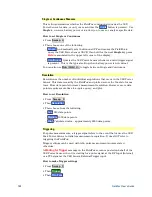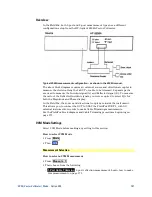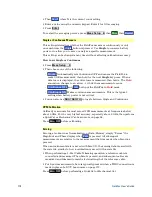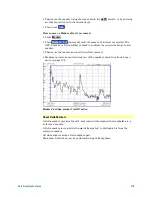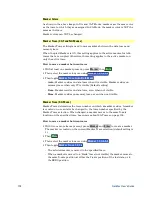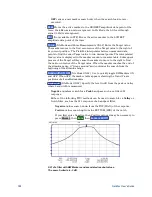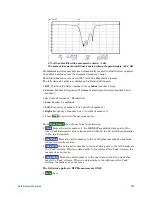
VVM (Vector Voltmeter) Mode - Option 308
169
10 Hz | 100 Hz | 1 kHz | 10 kHz | 100 kHz
More
30 Hz | 300 Hz | 3 kHz | 30 kHz
Output Power
Set the power level out of the FieldFox to High, Low, or manually set power level
to a value between High and Low.
Generally, the high power setting is used when measuring passive, high-loss
devices to place the signal farther from the noise floor. However, for devices that
are sensitive to high power levels such as amplifiers, use the Low power setting.
For best measurement accuracy, use the
Man
ual power setting at -15 dBm. After
calibration, the power level can be decreased for amplifiers, or increased for
higher dynamic range.
Caution
Power Level settings in this mode will NOT change Power Level settings in other
modes. To help prevent damage to your DUT, use caution when changing modes
with your DUT connected to the FieldFox test ports.
How to set Output Power
Press
Meas Setup 4
.
Then
More
Then
Output Power
o
High
(Default setting) Sets output power to the maximum achievable power
at all displayed frequency.
o
Low
Sets output power to approximately –45 dBm.
o
Man
Set output power to an arbitrary value.
o
Then press
Power Level
o
Then enter a value using the numeric keypad, the
▲
|
▼
arrows, or the rotary
knob.
o
Press
Enter
.
Averaging
Averaging helps to reduce the effects of random noise on a measurement. The
FieldFox computes the displayed value over several consecutive readings.
Average count determines the number of readings to average. The higher the
average count, the greater the amount of noise reduction.
An average counter is shown in the left edge of the screen as
Avg N
. This shows
the number of previous readings that have been averaged together. When the
counter reaches the specified count, then a ‘running average’ of the last
N
readings is displayed.
Average count = 1 means there is NO averaging.
This setting can be changed at any time without affecting calibration accuracy.
How to set Averaging
Press
Meas Setup 4
Then
More

